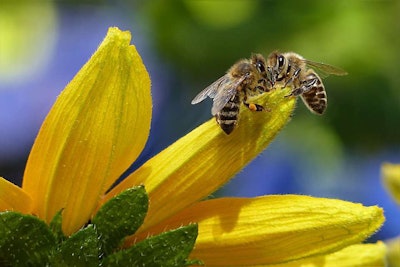
The researchers collected samples of DNA and RNA from 12 different bee species from nine countries to test. They developed a novel high-throughput sequencing technique that identified both previously known viruses and 27 never-seen-before viruses in a single experiment.
While typically a team would have to create molecular assays that are labor-intensive to test for the presence of a specific virus, this method has allowed scientists to find all the viruses present in a sample without having knowledge of what might be found.
This method is also becoming more inexpensive and could prove to be an efficient method for others to discover additional viruses in other bee populations.
“Although our study nearly doubles the number of described bee-associated viruses, there are undoubtedly many more viruses yet to be uncovered, both in well-studied regions and in understudied countries,” Zachary Fuller, a postdoctoral fellow at Columbia University and a recent Penn State graduate, told Science Daily.
One of the notable viruses discovered is similar to a virus that infects plants.
“It is possible that bees may acquire viruses from plants and could then spread these viruses to other plants, posing a risk to agricultural crops,” said Christina Grozinger, professor of entomology and director of the Center for Pollinator Research at Penn State. “We need to do more experiments to see if the viruses are actively infecting the bees – because the viruses could be on the pollen they eat, but not directly infecting the bees – and then determine if they are having negative effects on the bees and crops. Some viruses may not cause symptoms or only cause symptoms if the bees are stressed in other ways.”
Some of the viruses also exist in multiple bee species, meaning the pathogens could circulate among different bee populations.
The group plans to continue to research the viruses to determine ways of preventing them.
Also, it’s important to remember that just because National Pollinator Week ended last week, there are still things that you and your clients can do to help improve pollinator health.
Pollinator health is a complex subject, as there are multiple stressors that have been causing their decline, including viruses, habitat destruction, and incorrect pesticide applications.
While honeybees receive the most focus, all bees can use a little helping hand.
“Bees have two primary needs in life: pollen and nectar to feed themselves and their offspring and a suitable place to nest,” writes entomologist Jim Cane in his guide, Gardening and Landscaping Practices for Nesting Native Bees.
When it comes to aiding ground-nesting bees, create a single surface layer of small, streambed-type pebbles along the perimeter of a flower garden or landscaped area. It’s important that these pebbles remain undisturbed by foot traffic because female bees will burrow into the ground near them and rely on the pebbles’ positions as landmarks to return to their nests after foraging for nectar and pollen.
When pruning plants with woody stems that have pithy or hollow cores, Cane advises, leave a few foot-long dead sprigs in place. This will attract species that prefer to nest above ground, like small orchard bees.
Some bee-friendly plants include asters, beebalm, Joe Pye weed, crocus, tickseed, oregano, zinnias, snapdragons, sunflowers, foxglove, goldenrod, phlox, and milkweed.
It is better to select single flower tops like daisies instead of double flower tops like double impatiens, as these produce less nectar and are harder for bees to access pollen. Also, avoid highly hybridized plants, as some have been bred not to seed and will produce very little pollen.
When planting pollinator-friendly plants, focus on sunny spots and try to grow large patches of flowers at least 3 feet by 3 feet. Bees also need access to water and bee baths provide them safe places to land without crashing.
A shallow bowl or a plate with rocks with just enough water, so the tops of the rocks are not submerged, will be enough. The water will need to be changed daily.
While it is advised to avoid using pesticides if you must use them, do so responsibly and follow the application rates on the label.











